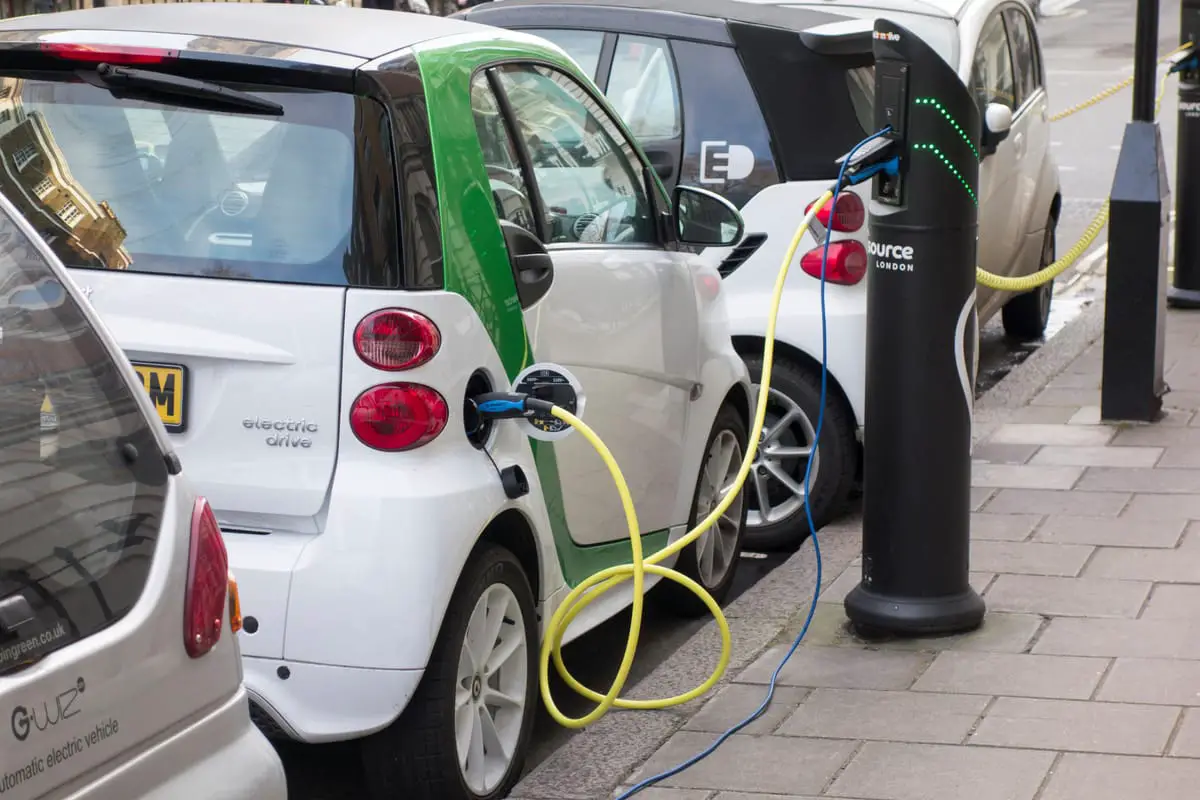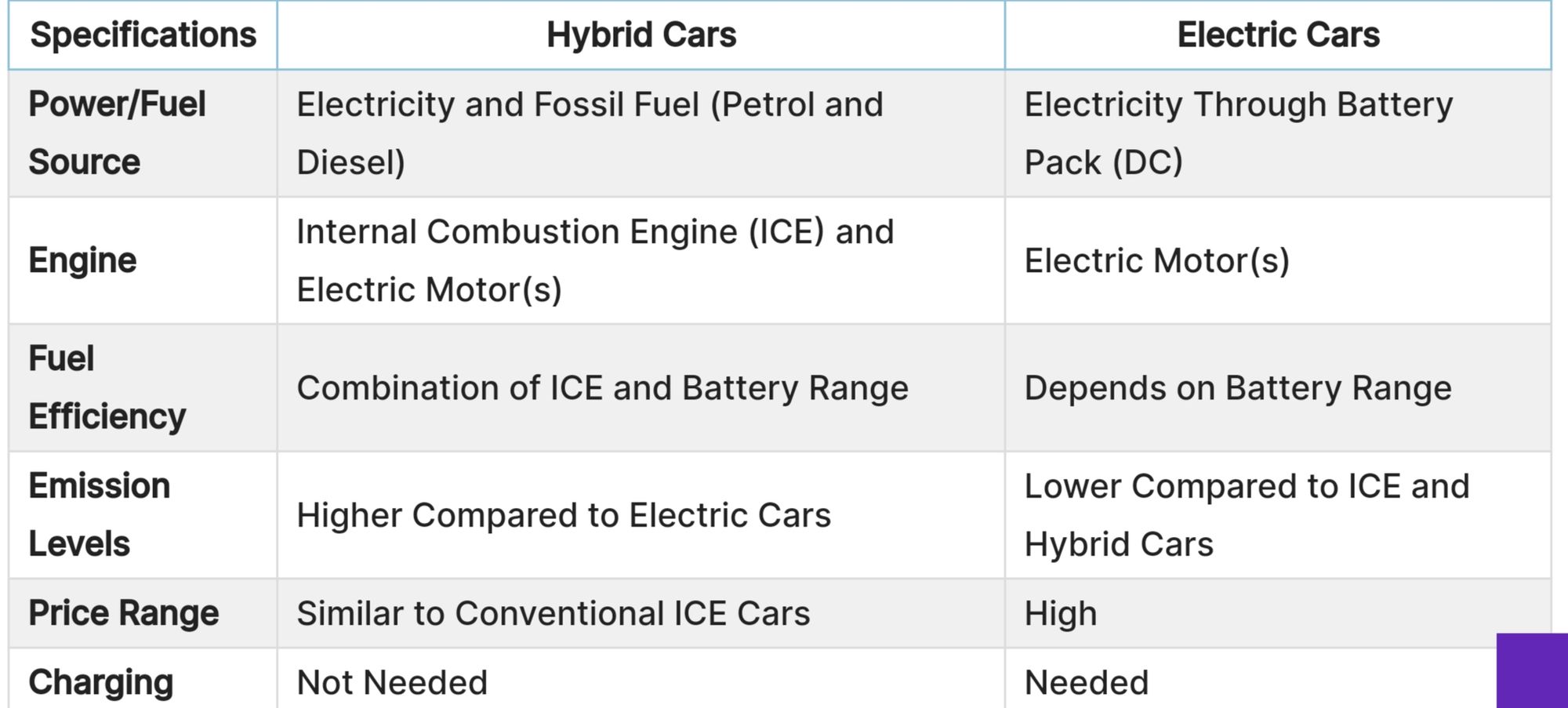What’s the difference between an electric car and a hybrid?
Electric cars get their juice from electricity while hybrid get its power from convectional gas. The price of purchasing and maintaining a vehicle is the largest distinguisher for many.


Electric cars get their juice from electricity while hybrid get its power from convectional gas. The price of purchasing and maintaining a vehicle is the largest distinguisher for many. If you can't decide which type of car to buy, keep this in mind too: Electrics cost a lot more upfront, but over time they usually cost less to maintain.
The main difference between a hybrid car and an electric car is that the hybrid combines an internal combustion engine and electric motor(s) to send power to its wheels. However, the electric car draws power from a single source of the electric motor(s) to propel the vehicle.
While hybrid cars offer better fuel efficiency or longer distances/ranges, electric vehicles are still yet to reach that potential. That said, electric vehicles pollute lower emissions compared to hybrid cars who are dependent on an internal combustion engine.
Plus, you never have to fill up the tank, so you won't ever pay for gas. Here's a quick cheat sheet to some common car terms:
- Battery-Electric Vehicles (BEVs) are powered by electricity alone. The vehicle has a battery and an electric motor. They have zero tailpipe emissions and offer smooth, quiet rides.
- Plug-In Hybrid Electric Vehicles (PHEVs) run on both electricity and gas. They have a much larger battery than a gas-powered hybrid so they can function as an EV during typical drives. If they do run out of electricity they can be driven using the gas engine.
- Hybrids Electric Vehicles (HEVs) use gas for propulsion, but use technology like regenerative braking to supplement. They are easy to fill with gas and the least expensive of the electrified vehicle options. These vehicles have the least upfront costs of the three.
Types of Hybrid Cars
Automobile companies use different hybrid designs to either achieve maximum fuel efficiency or to keep the hybrid car prices as low as possible. Below are the different types of hybrid cars:
1) Parallel Hybrid
In the most popular or common hybrid design, the parallel hybrid combines both electric and internal combustion engines to power the vehicle. They can run together or can be used as the primary power source while the other kicks in when extra power is required such as a hill climb, overtake a vehicle, etc. Both power sources are parallelly connected to the gearbox or the transmission and hence they are called “parallel”. An example of Parallel Hybrid Cars is the Toyota Camry, Honda Accord, Toyota Prius, Hyundai Sonata, etc.
2) Series Hybrid
Under this type of hybrid car, the Series Hybrid also employs both the petrol internal combustion engine as well as the electric motor. However, the internal combustion engine does not propel the car, instead it generates electricity to recharge the battery pack. The battery pack in turn powers the electric motor(s) which in turn sends power to the wheels. An example of a Series Hybrid car is the BMW i3, Kia Optima, Ford Fusion, Chevrolet Volt, etc.
3) Plug-in Hybrid
The Plug-in Hybrid elevates the conventional hybrid car with a much larger battery pack that requires to be charged. Generally, it uses a 110-volt electrical socket to charge the battery pack similar to an electric car. Since the Plug-in Hybrid car does depend on an internal combustion engine and can be run after it is fully charged, there is substantial improvement in the vehicle’s fuel efficiency. An example of a plug-in hybrid car is the BMW 330e, Hyundai Ioniq Plug-in Hybrid, Volvo XC40 Recharge Plug-in Hybrid, etc.
4) Two-Mode Hybrid
This type of hybrid design operates in two different ways. While on the first mode, it works just like a regular hybrid card. In the second mode, the design can adjust to different requirements by the engine to meet specific vehicle tasks.
5) Mild-Hybrid
In recent times, the cost to build an efficient hybrid car continues to be high. Car companies are devising new strategies in offering hybrid technology to the common man. Mild-hybrid designs have been adopted by car companies to adhere to emission norms as well as to slightly improve fuel efficiency without increasing the cost considerably. In this type of hybrid, the electric motor assists the petrol engine in increasing fuel efficiency, improving performance or both. Additionally, it acts as a starter for the automatic start/stop function, which switches off the engine when the vehicle comes to rest and thereby reduces the use of fuel. An example of mild-hybrid cars include Maruti Suzuki Ertiga, Ciaz, Baleno, etc.
Source: www.goodhousekeeping.com/travel-products/car-reviews/a34905891/best-electric-cars-2021/




